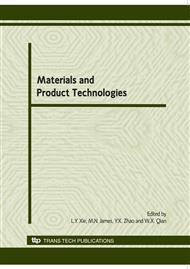p.1
p.10
p.17
p.27
p.32
p.37
p.43
p.49
Design for Lifecycle Cost and Preventive Maintenance Using Time-Dependent Reliability
Abstract:
Reliability is an important engineering requirement for consistently delivering acceptable product performance through time. As time progresses, the product may fail due to time phenomena such as time-dependent operating conditions, component degradation, etc. The degradation of reliability with time may increase the lifecycle cost due to potential warranty costs, repairs and loss of market share. In design for lifecycle cost and preventive maintenance, we must account for product quality, and time-dependent reliability. Quality is a measure of our confidence that the product conforms to specifications as it leaves the factory. Reliability depends on 1) the probability that the system will perform its intended function successfully for a specified interval of time, and 2) on the probability that the system response will not exceed an objectionable by the customer or operator, threshold for a certain time period. Quality is time-independent, and reliability is time-dependent. This paper presents a methodology to determine the optimal design and preventive maintenance of time-dependent, multi-response systems, by minimizing the cost during the life of the product. The lifecycle cost includes a production, an inspection, and an expected variable cost. All costs depend on quality and/or reliability. A roller clutch example highlights the design methodology for lifecycle cost.
Info:
Periodical:
Pages:
10-16
Citation:
Online since:
June 2010
Authors:
Keywords:
Price:
Сopyright:
© 2010 Trans Tech Publications Ltd. All Rights Reserved
Share:
Citation:


